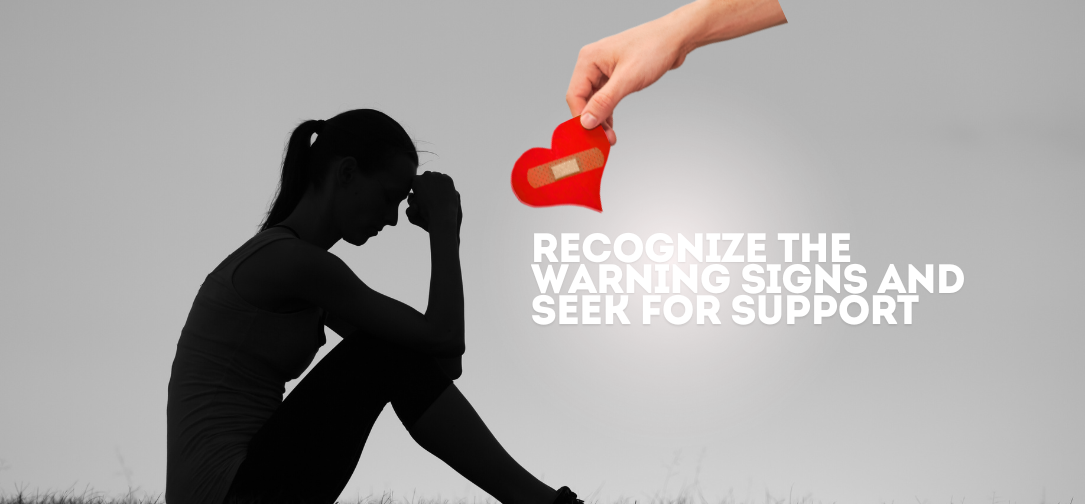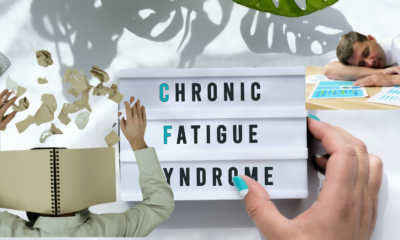Mental Health
Suicide Prevention: Recognizing Warning Signs and Offering Support

Suicide is a profoundly tragic and complex issue that affects individuals, families, and communities around the world. Every year, nearly 800,000 people die by suicide, which translates to one death every 40 seconds, according to the World Health Organization (WHO). While these figures are staggering, suicide remains one of the most preventable causes of death. With the right support systems, intervention strategies, and a compassionate approach to mental health, many lives can be saved. This article delves deeply into understanding suicide, recognizing the warning signs, offering practical support, and preventing this devastating outcome.
Understanding Suicide
Suicide is often described as a desperate attempt to escape overwhelming pain. For those contemplating suicide, it may feel as though there is no other way to end their suffering. They may believe they are a burden to others or that their pain is inescapable. Yet, suicide is never a simple or isolated event. It is often the result of a complex interplay of mental health issues, personal challenges, and environmental factors.
While mental health disorders, particularly depression and anxiety, play a significant role in suicide, they are not the sole causes. A combination of psychological, social, biological, and situational factors can lead a person down the path of suicidal thoughts and actions. Individuals with a history of trauma, substance abuse, or severe physical illness may also be at an increased risk.
Key Risk Factors
1. Mental Health Disorders: Depression, bipolar disorder, schizophrenia, and personality disorders are frequently associated with suicidal thoughts and behaviors. In particular, those with major depressive disorder may feel an overwhelming sense of hopelessness and despair, leading them to believe that suicide is the only escape.
2. Substance Abuse: Drugs and alcohol can impair judgment, heighten impulsivity, and deepen feelings of isolation and despair. Many suicides are linked to substance use, either as a direct result of intoxication or due to the way substances exacerbate underlying mental health issues.
3. History of Trauma: Individuals who have experienced physical, emotional, or sexual abuse, or those who have faced significant trauma such as the loss of a loved one, war, or displacement, are at higher risk for suicide. The lingering effects of trauma, including post-traumatic stress disorder (PTSD), can make it difficult for individuals to cope with their emotions, increasing their susceptibility to suicidal thoughts.
4. Chronic Illness or Physical Pain: Physical health issues, particularly those that cause chronic pain or disability, can contribute to feelings of hopelessness and helplessness. The perceived loss of autonomy, coupled with the fear of being a burden, can sometimes lead individuals to contemplate suicide.
5. Isolation and Lack of Support: Loneliness, whether caused by social isolation or a lack of supportive relationships, is another significant risk factor for suicide. The feeling of being disconnected from others can deepen emotional pain and reinforce the belief that no one cares or that life has no meaning.
6. Cultural and Societal Factors: In some cultures, there may be stigma surrounding mental health or a lack of understanding about the complexities of suicide. This can prevent individuals from seeking help. Furthermore, societal pressures, including economic hardship, discrimination, and bullying, can contribute to a sense of hopelessness and increase the risk of suicidal thoughts.
Recognizing the Warning Signs
The key to preventing suicide often lies in recognizing the warning signs. Contrary to some beliefs, most individuals contemplating suicide give some indication of their distress. These signs can be subtle, but with awareness and sensitivity, they can be detected, allowing for timely intervention.
Verbal Cues
Many people who are considering suicide will talk about their feelings, even if indirectly. Some verbal cues may include:
Talking about death or dying: Expressions like “I wish I were dead,” or “I can’t go on like this” are clear indicators that someone is contemplating suicide.
Hopelessness: Statements such as “There’s no way out,” “Nothing will ever change,” or “There’s no point in trying” can signal that a person is feeling trapped and sees no future.
Being a burden: Comments like “Everyone would be better off without me” or “I’m just a burden to everyone” may suggest that the individual feels worthless and believes others would benefit from their absence.
Goodbyes: A person may say things that sound like they are saying goodbye or leaving things behind, such as “You don’t have to worry about me anymore” or “I just wanted to say goodbye.”
Behavioral Cues
Behavioral changes often accompany suicidal thoughts. Some of the most common behavioral warning signs include:
Withdrawing from relationships: A person may pull away from friends, family, and social activities they once enjoyed. This isolation can be both a symptom of depression and a precursor to suicidal action.
Giving away possessions: In some cases, individuals contemplating suicide may begin to give away items that have significant emotional value, as if they are putting their affairs in order.
Risk-taking behaviors: Engaging in reckless behaviors, such as excessive drinking, drug use, or dangerous activities, may signal a disregard for life and a desire to harm oneself.
Sudden calmness after a depressive episode: A sudden shift from deep depression to seeming calmness can sometimes indicate that the person has made the decision to end their life and feels a sense of peace or resolution.
Changes in sleep patterns: Insomnia or sleeping excessively are common signs of emotional distress. A person might experience difficulty sleeping or may sleep excessively in an attempt to escape their emotional pain.
Self-harm: Acts of self-harm, such as cutting, burning, or other forms of self-injury, are often warning signs of severe emotional distress. While self-harm is not always linked to suicidal intent, it indicates a need for immediate support and intervention.
Emotional and Cognitive Cues
In addition to verbal and behavioral signs, individuals may exhibit changes in their emotional or cognitive state that can indicate a risk of suicide:
Feelings of worthlessness: A pervasive sense of worthlessness or guilt may emerge, leading the individual to believe they are undeserving of life or that they have failed in significant ways.
Extreme mood swings: While fluctuations in mood can occur for a variety of reasons, extreme mood swings particularly sudden shifts from depression to apparent elation may suggest a heightened risk of suicide.
Increased agitation or irritability: Suicidal individuals may become easily agitated, frustrated, or angry. Their emotional pain may manifest in heightened irritability or sensitivity to criticism.
Loss of interest in life: A person may stop caring about their future, neglect responsibilities, or cease engaging in hobbies or activities that once brought them joy.
Offering Support: How to Help Someone in Crisis
When someone is exhibiting warning signs of suicide, offering support can be lifesaving. However, this can be a challenging and sensitive task, as it involves confronting deeply emotional and potentially uncomfortable situations. Below are essential steps to consider when helping someone in crisis.
1) Start the Conversation
Starting a conversation about suicide can feel daunting, but it is crucial. A common misconception is that asking someone if they are considering suicide will “put the idea in their head” this is not true. Openly discussing suicide can provide relief for someone who is struggling and help them feel less alone.
How to Approach the Topic:
- Be direct but compassionate: Ask open-ended questions like, “I’ve noticed you’ve seemed really down lately, and I’m worried about you. Are you thinking about hurting yourself?” or “Have you been feeling like you want to end your life?”
- Listen non-judgmentally: Allow the person to express their feelings without interruption or judgment. Let them know that it’s okay to talk about their pain and that you are there to support them.
- Validate their feelings: It’s important to validate the emotions behind suicidal thoughts. Instead of minimizing their feelings, say something like, “I can’t imagine how hard this must be for you, but I want you to know you’re not alone in this.”
2) Assess the Risk
If someone admits to having suicidal thoughts, it’s important to assess how immediate the risk is. There are a few questions that can help gauge the level of danger:
- Do they have a specific plan?: Ask whether they have thought about how they would end their life. If they have a specific plan in place, the risk is significantly higher.
- Do they have access to means?: Find out if they have access to the tools or methods they’ve considered (e.g., firearms, medication, etc.). Limiting access to these means is crucial in preventing an impulsive act of suicide.
- Have they attempted suicide before?: Individuals with a history of suicide attempts are at a higher risk of repeating the behavior, particularly during times of increased stress.
3) Encourage Professional Help
While your support is invaluable, professional intervention is often necessary for someone contemplating suicide. Encourage the person to seek help from a mental health professional, such as a therapist, counselor, or psychiatrist. Offer to help them find resources or accompany them to their first appointment if they feel apprehensive.
If the situation is urgent, do not hesitate to contact emergency services. In some cases, hospitalization may be necessary to keep the person safe while they begin treatment.
4) Stay Connected
Once the immediate crisis has passed, it’s essential to maintain ongoing support. Regular check-ins, both in-person and through phone calls or messages, can provide a vital lifeline for someone struggling with suicidal thoughts. Encourage the person to continue attending therapy, joining support groups, or following prescribed treatments.
Offer emotional and practical support, helping them to reintegrate into social activities, hobbies, and responsibilities in a way that feels manageable. Being a consistent presence in their life can help counteract feelings of isolation and loneliness.
5) Take Care of Yourself
Supporting someone who is suicidal can be emotionally draining and challenging. It’s essential to seek support for yourself, whether through therapy, peer support groups, or conversations with trusted friends or family. Recognizing your limits and avoiding burnout is crucial to maintaining your capacity to help others.
Prevention Strategies: Building a Supportive Environment
While recognizing warning signs and offering immediate support is critical, long-term suicide prevention involves creating a supportive and compassionate environment that addresses the underlying causes of suicide and mental health issues.
Promoting Mental Health Awareness
Raising awareness about mental health issues is a fundamental step in reducing the stigma surrounding suicide and encouraging individuals to seek help. Mental health campaigns in schools, workplaces, and communities can provide education on recognizing signs of distress, understanding mental health disorders, and promoting available resources.
Access to Mental Health Services
Improving access to mental health services is essential for suicide prevention. This includes making therapy and counseling services more affordable and available in underserved areas. Telehealth services, hotlines, and community mental health centers can provide critical support to individuals who might otherwise go without care.
Limiting Access to Means
Restricting access to common means of suicide such as firearms, medications, or dangerous substances can be an effective way to prevent impulsive suicides. Implementing safety measures, like gun locks and safe medication storage, can help reduce the likelihood of an attempt.
Fostering Social Connections
Building and maintaining social connections is vital for emotional well-being. Loneliness and social isolation are significant risk factors for suicide, so fostering a sense of community and belonging can help prevent suicidal behavior. This can be done through support groups, peer mentorship programs, and social activities that bring people together.
Crisis Hotlines and Support Networks
Suicide prevention hotlines, like the National Suicide Prevention Lifeline in the U.S. or the Samaritans in the U.K., provide immediate support for individuals in crisis. These services are staffed by trained professionals who can offer emotional support, counseling, and intervention when needed.
Online forums and peer support groups also play a critical role, especially for individuals who may feel isolated or reluctant to seek face-to-face help. These platforms can offer a safe space to share experiences, find validation, and receive guidance from others who have been through similar struggles.
Conclusion
Suicide is a preventable tragedy that requires collective action. By recognizing the warning signs, offering compassionate support, and advocating for better mental health resources, we can make a difference in the lives of those struggling with suicidal thoughts. Everyone has a role to play whether it’s listening to a friend in crisis, promoting mental health education, or supporting policies that improve access to care.
Ultimately, the most important message we can convey to those contemplating suicide is that they are not alone and that help is available. There is hope, even in the darkest moments, and with the right support, healing and recovery are possible. Through understanding, intervention, and ongoing care, we can prevent suicide and save lives.
-

 Press Release4 days ago
Press Release4 days agoClinical Trials Market Set for Robust Growth, Driven by Drug Development Surge and Digital Innovation
-

 Press Release5 days ago
Press Release5 days agoFill-Finish Pharmaceutical Contract Manufacturing Market Expected to Flourish Amid Biopharmaceutical Boom and Global Outsourcing Trend by 2035
-

 Business6 days ago
Business6 days agoHow Managed IT Solutions Help Small Teams Compete at Enterprise Scale
-

 Press Release5 days ago
Press Release5 days agoGreen Bio Chemicals Market Poised for Sustainable Growth amidst Global Shift to Eco-Friendly Alternatives by 2035
-

 Press Release5 days ago
Press Release5 days agoIndustrial Boiler Market Expected to Surpass USD 24.4 Billion by 2035 Amid Growing Demand for Energy Efficiency and Industrialization
-

 Press Release5 days ago
Press Release5 days agoPreventive Vaccines Market to Witness Strong Growth by 2035
-

 Press Release5 days ago
Press Release5 days agoPet Food Nutraceutical Market Set for Robust Expansion Amid Rising Demand for Pet Wellness by 2035
-

 Press Release5 days ago
Press Release5 days agoWaterproof Structural Adhesives Market: A Comprehensive Study Towards USD 10.3 Billion in 2035






























